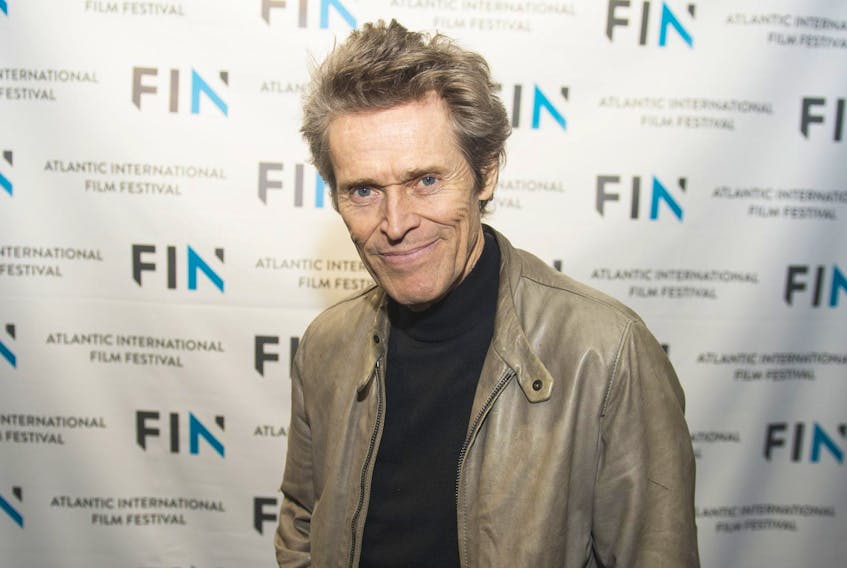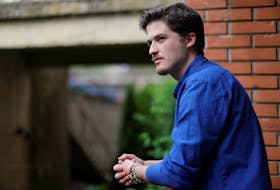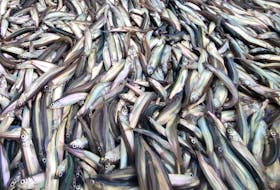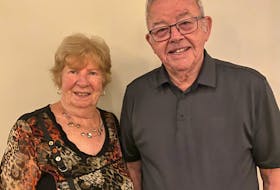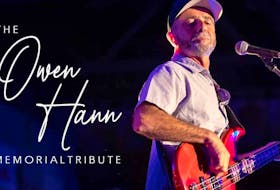Nova Scotian film fans finally got to see the highly anticipated Yarmouth-shot thriller The Lighthouse, and get the low-down on the making of the chilling psychodrama at the closing gala of the 2019 FIN Atlantic International Film Festival on Thursday night.
Delegates and attendees packed three of Park Lane Theatres cinemas for the screening and Q&A with writer/director Robert Eggers and star Willem Dafoe, who spends the majority of the film in a battle of wills with his assistant lighthouse keeper, played with steely determination by Robert Pattinson.
The Lighthouse has already screened at the Cannes and Toronto International Film Festivals, but Eggers and Dafoe seemed pleased to be back where it all began, when they shot it over 35 days in April and May of 2018.
Filming had its share of challenges, starting with Eggers decison to use 35mm black and white film, and vintage camera lenses with a square aspect ratio similar to silent and early sound films that emphasized the vertical height of the lighthouse as well as the vivid closeups of its stars.
Using the rocky outcrops of Cape Forchu as a background, and the site of a custom built lighthouse, the testy format and rough spring weather tried the patience of cast and crew alike, but the proof of their perseverence is on the screen in cinematogapher Jarin Blaschke’s deep blacks and full range of greys.
“They’re shooting water at you, and you can’t see, and you keep telling yourself, ‘I’m gonna be OK!’,” Dafoe told the crowd of his experience. “But you’re so cold, and I’m looking at Robert, and he’s turned blue. Now I’m thinking, ‘We NEED to be OK.’
“But we had things to do, the weather was very changeable, and the crew was there for us. They suffered more than we did. We got to change our clothes sometime and take little breaks. But it was tough, and that toughness and the weather really informed what we were doing, it was all part of it. I can’t say I was ever unhappy or that I suffered, and actors love to talk about how hard a role was. But this was pleasure.”
The worst weather
Over the course of the film, an already tense relationship between Dafoe’s seasoned veteran Wake and Pattinson’s restless wanderer Winslow gets stretched to the breaking point, with nightmarish visions and aggressive seagulls only augmenting their feelings of isolation and inebriation on a remote New England in the late 1800s.
“The shot where Rob and Willem are waiting for the lighthouse tender, the relief boat, and the rain and the wind were just going, that was the real weather that day,” Eggers recalled. “And I remember that morning, the Nova Scotia crew — which I’m happy to always praise for their hardiness, work ethic, professionalism and skill — were hanging a camera over a cliff while we were trying to get a shot of some crashing waves as Rob pulls up a lobster trap.
“A few of the guys said this was the worst weather they’d ever shot in, but basically, this is what they do. That was alarming.”
For his part, Dafoe has played his share of extreme characters, from Bobby Peru in David Lynch’s lurid road movie Wild at Heart to one of the silver screen’s first living dead portrayers, Nosferatu’s Max Shreck in Shadow of the Vampire.
But after falling in love with Eggers’ debut feature The Witch, and reading his part of the “wickie” Wake, he saw The Lighthouse as “an opportunity to really step out.”
During production, the Platoon and To Live and Die in L.A. star lived in a small cottage in Yarmouth, rented for him by the production. “My life was waking up in the morning, getting my stuff, going off to work at the lighthouse, coming home, making dinner, maybe having a drink, and going to bed. That was my life,” said Dafoe, who, after a day of manic acting, dancing and singing, was able to leave his character on the set.
“I think if you try to be your character all the time, it punches you out,” he explained. “You don’t get renewed. You’ve gotta be ready for when the frame is there, and you enter that frame, and you’re fresh and you just go.
“If you do it all the time, everything gets flattened out, and you get tired, in the sense of not having the same kind of sharp impulses. When the camera shuts off, you shut off, because there’s no reason to sustain it.”
Eggers would return 'in a heartbeat'
The audience was full of questions and comments, with one former lighthouse keeper, Chris Mills, pointing out that “nothing like that ever happened to me, apart from the drinking and some nudity.” He felt the film took the sense of isolation and bad chemistry that can happen when two people are stranded together “and distilled it into one horrifying picture.”
Eggers was quick to point out that while it’s easy to tag his films with a horror label — which also helps from a marketing standpoint — their composition is much more complex, with elements of folklore, mythology, fairy tales and the occult, and influences ranging from Herman Melville to Ingmar Bergman.
“For me, I’m more interested in who are we, and where are we going. And I want to explore that by looking at where we came from, I like the past,” said the director, who enjoyed seeing some of the history preserved around Yarmouth, but didn’t get to experience as much of the province as he might have liked.
“I can’t say enough how much I enjoyed working here. If there was another film of mine that made sense to shoot here, I would do it in a heartbeat,” he said to a hearty round of applause. “Not to be sycophantic, but I’ve told some of my colleagues, if for some reason you need what Nova Scotia has location-wise, you should shoot there.”
The applause got even louder when Eggers suggested that the province reinstate its tax credit, which the provincial government eliminated in 2018 after The Lighthouse had finished shooting, and replaced with an incentive program that he says makes it less attractive for outside productions to come to the region to film.
“It worked out for us financially, because we needed to build so much. But now, if someone wants to make a film here and they need to build a lot of stuff, even if I’m telling them how fantastic the crews are, it might not work out so well for them financially,” said Eggers.
“So they might go somewhere else, and not because Nova Scotia isn’t great, but the tax incentive needs to come back.”
For those who were unable to see The Lighthouse, it comes back later this fall, and is slated to have its theatrical run start on Oct. 18.

RELATED:

